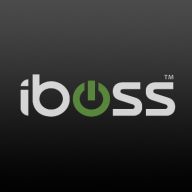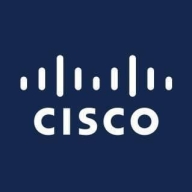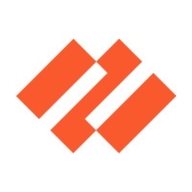


Prisma Access by Palo Alto Networks and Cisco Secure Access compete in the secure access market. User opinions suggest Cisco Secure Access has a slight edge with its comprehensive features, although Prisma Access is favored for pricing and support.
Features: Prisma Access is noted for strong security measures, smooth integration, and effective protection for remote workers. Cisco Secure Access excels with detailed security policies, comprehensive network controls, and flexibility.
Room for Improvement: Users indicate that Prisma Access could enhance documentation, support resources, and user interface. Cisco Secure Access users mention issues with configuration complexity, occasional sluggish performance, and high resource demands during load peaks.
Ease of Deployment and Customer Service: Prisma Access has an easy deployment process and reliable customer service with quick responses. Cisco Secure Access offers a more complex setup but mitigates challenges with comprehensive guides, complemented by proactive customer support.
Pricing and ROI: Prisma Access is known for competitive pricing and promising ROI, offering justified costs for services rendered. Cisco Secure Access requires more initial investment, yet users value the wide feature set and operational efficiency, contributing to solid long-term ROI.
| Product | Market Share (%) |
|---|---|
| Prisma Access by Palo Alto Networks | 15.3% |
| iboss | 2.1% |
| Cisco Secure Access | 3.1% |
| Other | 79.5% |



| Company Size | Count |
|---|---|
| Small Business | 6 |
| Midsize Enterprise | 6 |
| Large Enterprise | 5 |
| Company Size | Count |
|---|---|
| Small Business | 6 |
| Large Enterprise | 7 |
| Company Size | Count |
|---|---|
| Small Business | 23 |
| Midsize Enterprise | 21 |
| Large Enterprise | 27 |
Iboss offers a comprehensive cloud-based security platform valued for its scalability and autonomous features, ensuring robust security with easy deployment and management capabilities.
Renowned for its robust security architecture, Iboss integrates seamlessly within diverse networks, delivering efficient granular filtering and advanced content categorization. Its single pane of glass console provides ease of management, allowing rapid scalability suitable for rapidly deploying environments. Operates in BYOD setups due to inline filtering without device installation. Integration with cloud-based applications enhances user control, and features like SASE, SSL inspection, and ChatGPT risk protection stand as highlights. Despite its strengths, users have pointed out areas for enhancement like direct navigation in reports, SSL decryption, and better cloud integration while having room to improve data loss prevention.
What are the most important features of Iboss?The usage of Iboss spans educational institutions, specifically K-12, to enforce internet policies, protect data, and support remote work environments. It provides web filtering and security frameworks to ensure safe browsing. Its platform-as-a-service model offers flexibility for both cloud-based and on-premises requirements, integrating seamlessly to deliver enhanced security features suitable for various deployment needs including zero trust, CASB, and network security for work-from-home setups.
Cisco Secure Access is a comprehensive Security Service Edge (SSE) solution (a key component of a SASE solution) that addresses the complexities of securing a hybrid enterprise. Cloud-delivered and grounded in zero trust, it delivers a unique blend of user simplicity and IT efficiency for frictionless, secure access to all applications—SaaS (with gen AI), private apps, and the internet—regardless of user location or device. Secure Access protects users, data, and devices against relentless, sophisticated, and constantly evolving threats including AI-driven attacks and identity breaches.
Provides all core SSE components (ZTNA, SWG, CASB, and FWaaS) plus extended capabilities.
Includes VPN-as-a-Service (VPNaaS), data loss prevention (DLP), AI Assistant, visibility/control/guardrails for generative AI use, digital experience monitoring (DEM), reserved IP, remote browser isolation (RBI), DNS-layer security, flexible security enforcement (in cloud or on-premises), policy verification, and more.
Protects users as they seamlessly access resources and apps with no extra steps needed, regardless of protocol, port, or level of customization
Simplifies IT operations through a single client, single dashboard, single license, and unified policies.
Lowers risk with least privilege, granular controls backed with unmatched threat intelligence of Cisco Talos.
Eases interoperability with other products from Cisco and third-party vendors with common administrative controls, data structures, and policy management.
Robust integrations
Integrates with Cisco Identity Intelligence to protect against the startling increase in identity-based attacks.
Integrates with many SAML Identity Providers (IDPs) such as AD, Azure AD, Okta, Ping, etc.
Integrates with Cisco offerings including SD-WAN, Splunk, XDR, Thousand Eyes, third party technologies such as Menlo RBI, Chrome Enterprise Browser, and AppOmni for SSPM.
Prisma Access by Palo Alto Networks provides consistent security for all users and applications across your remote networks. Prisma Access grants users safe access to the cloud and data center applications and the internet as well. In addition, the solution combines all of your security and networking capabilities into a single cloud-delivered platform, enabling flexible hybrid workforces.
Prisma Access can be managed two ways:
Prisma Access delivers both networking and security services, including:
Prisma Access by Palo Alto Networks Features
Prisma Access by Palo Alto Networks has many valuable key features including: App-ID, User-ID, Device-ID, SSL Decryption, Dynamic User Group (DUG) Monitoring, AI/ML-Based Detection, IoT Security, Reporting, URL Filtering, Enterprise Data Loss Prevention (DLP), Digital Experience Monitoring (DEM)*, Logging, Policy Automation, Intrusion Prevention System (IPS), and many more.
Prisma Access by Palo Alto Networks Benefits
Some of the benefits of using Prisma Access by Palo Alto Networks include:
Reviews from Real Users
Below are some reviews and helpful feedback written by Microsoft Azure Synapse Analytics
users who are currently using the solution.
PeerSpot user Partha D., Global Network Tech Lead at a computer software company, speaks about his experience using the product, saying, "It protects all app traffic so that users can gain access to all apps. Unlike other solutions that only work from ports 80 and 443, which are predominantly for web traffic, Prisma Access covers all protocols and works on all traffic patterns... The most sophisticated attacks can arise from sources that are not behind 80/443."
Tejas J., a Sr. Cloud Security Architect at a computer software company, mentions that "it is geographically dispersed, and it sits on top of Google and AWS platforms. Therefore, you don't face the standard issues, such as latency or bandwidth issues, that you usually face in the case of on-prem data centers.”
Another PeerSpot reviewer, Max I., Associate Director at Cognizant, comments that "Security is absolutely spot-on, really top-notch. It's the result of all the components that come together, such as the HIP [Host Information Profile] and components like Forcepoint, providing end-user content inspection, and antivirus. It incorporates DLP features and that's fantastic because Prisma Access makes sure that all of the essential prerequisites are in place before a user can log in or can be tunneled into."
We monitor all Secure Access Service Edge (SASE) reviews to prevent fraudulent reviews and keep review quality high. We do not post reviews by company employees or direct competitors. We validate each review for authenticity via cross-reference with LinkedIn, and personal follow-up with the reviewer when necessary.